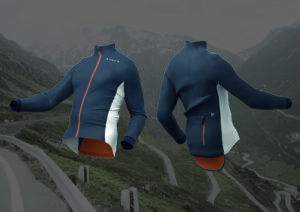
Making sustainable sportswear involves incorporating environmentally friendly materials, implementing ethical production practices, and promoting responsible consumption. Here are 10 easy to follow steps to guide you in making sustainable sportswear:
1. Material Selection:
- Choose organic, recycled, or upcycled fabrics: opt for materials like organic cotton, recycled polyester, or regenerated nylon, which reduce the environmental impact of your sportswear. Recycled or upcycled fabrics help minimize waste and conserve resources. If sustainability and biodegradability is paramount, then look to more sustainable and natural fibres such as Bamboo, Merino or Tencel that are organic and therefore damage the planet much less. Generally, stay away from petrochemicals that pollute the world when they are made, worn and washed and then disposed of.
2. Avoid Harmful Chemicals:
- Use eco-friendly dyes and finishes: Select low-impact dyes that minimize water usage and avoid harmful chemicals. opt for non-toxic and biodegradable finishes to reduce pollution during production. This process should be followed across the manufacturing of the fabrics trims and components.
3. Ethical Production:
- Collaborate with Fair Trade-certified manufacturers: Work with manufacturers that prioritize fair wages, safe working conditions, and workers’ rights. Ensure their practices align with ethical standards and certifications. This process should be followed across the manufacturing of the fabrics trims and components.
4. Reduce Waste:
- Implement zero-waste or minimal waste techniques: Design patterns that maximize fabric utilization and minimize scraps. Reuse or recycle any leftover materials, trims or components where suitable.
5. Packaging and Shipping:
- Use sustainable packaging: Choose eco-friendly packaging materials like recycled or biodegradable materials. Minimize packaging waste by using appropriate sizing and avoiding excessive packaging. Think about using biodegradable packaging that causes no harm when disposed of or packaging that can be used again or has a 2nd life use.
6. Durability and Longevity:
- Focus on quality and durability: Design sportswear that lasts longer, reducing the need for frequent replacements. Reinforce seams, use high-quality stitching, and choose durable materials that can withstand wear and tear. Quality costs more but offers real value if it lasts longer and protects the planet.
7. Responsible Marketing:
- Educate consumers: Promote the benefits of sustainable sportswear, such as reduced environmental impact and support for ethical practices. Provide transparency about the sourcing, production, and materials used. Consumers value transparency and are much more willing to purchase from brands that have a sustainable approach and policy.
8. Recycling and Take-Back Programs:
- Establish recycling initiatives: Encourage customers to recycle their worn-out sportswear by offering recycling programs or collaborating with organizations that accept and repurpose old garments. Patagonia offer this service and have dedicated workshops within some of their stores that repair while you wait/shop.
- Think about size exchange too. If a customer gains or losses weight and needs to buy again, offer a discount and recycling/repurpose policy for their old garments.
9. Social and Environmental Impact:
- Measure and improve impact: Regularly assess and monitor your company’s social and environmental impact. Set goals for continuous improvement and work towards reducing your overall carbon footprint. There are several ways you can do this by partnering with eco initiatives who’s goal is to provide brands and businesses with a way to offset their carbon footprint. 1% for the planet is one of the most popular along with One Tree Planted.
10. Collaboration and Industry Engagement:
- Join sustainability initiatives: Participate in industry-wide initiatives focused on sustainability, such as partnerships, collaborations, or sustainability-focused conferences. Engage with other stakeholders to promote knowledge sharing and drive positive change.
Remember that implementing sustainability practices is an ongoing process. Continuously seek innovative solutions, stay informed about new sustainable materials and techniques, and adapt your practices accordingly to further enhance the sustainability of your sportswear production.
To find out more, get in touch or download our guides.




